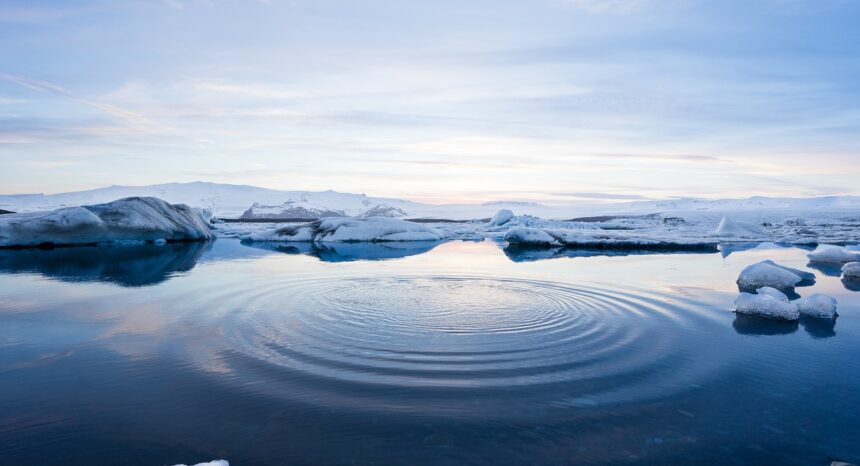The melting ice caps will not only impact our coastlines, but may radically alter international trade, a new study finds.
The issue: There is less ice in the Arctic Ocean than at any time in human memory, a consequence of climate change. Just about every scientific model expects the melting to continue or even to accelerate in the coming decades.
With Russia’s northern coast no longer perennially encased with ice, commercial shipping traffic has already started to traverse the region each summer. The Arctic offers a much faster way to transport goods between factories in East Asia and European customers. From Japan, China and South Korea, the Northern Sea Route, as it is known, is about a third shorter than the historical route through the Indian Ocean, Suez Canal and Mediterranean. As the melt continues, scientists expect this Arctic route will become the year-round favorite in the not-too-distant future.
A new paper looks at the economic, geopolitical and environmental implications of this sweeping shift in global trade.
An academic study worth reading: “Melting Ice Caps and the Economic Impact of Opening the Northern Sea Route,” in The Economic Journal, 2017.
Study summary: Using the latest climate research, Eddy Bekkers of the University of Bern and his colleagues predict that by 2030, if not sooner, enough Arctic ice will have melted to put the Northern Sea Route (NSR) into use year-round. After calibrating baseline predictions for global output and trade in 2030, they estimate the economic impacts of this shock to global transportation.
Obstacles remain, Bekkers and his colleagues point out, such as extreme weather in the Arctic, Russian transit fees and a lack of emergency ports in the Russian north. For these reasons, insurance premiums for ships plying the NSR are higher than those navigating traditional southern routes.
Change will be gradual, easing the impact of these changes on affected countries. But whether it is 2020, 2030 or 2040, the authors expect that soon most shipping traffic between East Asia and northern Europe will traverse the NSR and skip the southern route through the Suez Canal in Egypt — which currently sees about 8 percent of all global shipping traffic, or 15,000 ships a year. This change will also profoundly impact the ecology of a region that has always been largely off-limits to humans.
The paper predicts:
- The NSR will save between 20 and 30 percent on transport costs between East Asia (China, Japan and South Korea) and northern Europe (Germany, France, The Netherlands and the United Kingdom).
- Trade between East Asia and the European Union will increase around 7 percent.
- The NSR will absorb about 4.7 percent of global shipping; for example, 13.4 percent of all Chinese trade will use the route.
- About 10,000 ships will cross the Arctic each year.
- Trade in the Suez Canal will drop around two-thirds.
- Expect “tremendous pressure on the facilities and economies servicing” the southern route, including Egypt and Singapore.
- There will be less trade between northern and southern Europe.
- There will be an increase in exports from northern Europe to East Asia.
- Countries that benefit economically – for example in northern Europe and East Asia – can expect increases in real incomes; southern European countries will experience real income declines as their exports decrease.
- The authors do not expect any major labor shocks since the changes will occur gradually.
- Though CO2 emissions will decline as ships spend fewer days at sea, these gains will be offset by the increased quantities of trade between Europe and Asia and the subsequent increased production in Asia to meet that demand.
- Overall, when all changes are factored in, global emissions should rise by about 0.07 percent (or about the same amount as Latvia or Lithuania produces annually).
- These figures change little if the baseline year is moved to 2020 or to 2040.

Helpful resources and research:
- A 2015 study in Nature Climate Change mapped the decline in sea ice in the Arctic.
- In 2012, Keith Gessen of The New Yorker sailed on one of the first freighters crossing the Arctic.
- This 2014 story in The Economist charted how Central Asia and China have tried to revive the old Silk Road to move goods between Asia and Europe faster over land.
- The Arctic Council is an intergovernmental forum for states abutting the Arctic Ocean. As a sign of how seriously they view Arctic trade, China, Japan and South Korea recently gained observer status.
- The National Snow and Ice Data Center at the University of Colorado Boulder specializes in research on Earth’s frozen regions.
- The Suez Canal Authority has a webpage with statistics and historical information on one of the world’s most important waterways.
- Russia’s Northern Sea Route Administration, which reports to the Ministry of Transportation, has an English-language webpage with rules, regulations and emergency contact details.
- The Barents Observer is a news site based in Norway that covers Arctic developments in English and Russian.


Expert Commentary